by Hoyt Nelson
Here’s another installment in Hoyt Nelson’s love affair with food.
The first Street Food that I fell in love with were the liquados in Mexico about 1963. My first trips there were in the heat of summer and the thought of a cold drink was irresistible. Various fruit juices (mainly orange) were freshly squeezed and mixed with sugar and ice. These cold drinks were pure heaven.
In Istanbul in 1974, it was a little different. I stopped to watch a street vendor barbecue what looked like intestines on a spit. He handed me a bite and I noticed a couple of oldsters tittering about how I might react. Of course I had to eat it! But, cook had not cut it up because it was easy to wrap the intestines around the spit. He also did not care that this made it very hard to clean out the original contents (which smelled and tasted like you-know-what). On my next trip to Istanbul in 2007, we had a much better experience. Fish sandwiches were being sold on a small boat moored close to the bridge across the Bosporus. We frequently don’t take time to eat lunch while touring, but we took a flyer based on the smell. It turned out to be one of our best street foods ever. We saw lots of people with fishing poles on the Galata bridge and I believe the fish had been caught only minutes before we ate them. As most fishermen will tell you, fish is at its best when it is eaten as soon as it has been caught.
Although there wasn’t a street in sight, I think the following still qualifies as “Street Food”. On our 2nd trip to Thailand in 2005, we witnessed many small floating restaurants (like canoes). All the food was cooked and sold to other working boats – mainly breakfast. We never saw a tourist buy anything since the tour boats had other plans. Further up north, we maneuvered down a fast moving river for about 5 miles on a primitive raft of bamboo logs lashed together. At the end of the trip, we stopped in the middle of a forest; there was a “kitchen” created from a tarp draped over a few saplings sitting next to a fire pit. The cook served us a Thai meal that would be considered very good under the best circumstances. Dishes were “washed” afterward in an old rusty dishpan filled with very brown water from the river we had just come from. We survived with no ill effects.
In a small town close to Yellow Mountain in southwest China, I remember a menu in (translated dishes into, frequently meaningless, sometimes laughable) “English”. One entry for “Nutritious Beef Penis” caught our eye (as opposed to all those other cheap fast food penises we suppose). Nobody in our group sampled it.
I was not tempted to try anything more exotic until a trip to Java in 2011. One night, our tour guide took us to a street market and sat us down at a place specializing in cobra. A young girl brought out a wriggling snake which she killed and skinned in front of us. The cook however was not very skilled and he deep fried the pieces till they were rock hard. The raw blood, when mixed with a little red wine was however surprisingly good.
I stopped at a gelateria in Venice in 2013 for a quick cone where I noticed a tub labeled “pina”. Pineapple sounded good so I pointed to it only to discover the flavor was in fact “pine nut”. It wasn’t too bad, but not my favorite. The next night I bought some chestnuts from a vendor not too far away, but I later discovered they were not roasted. I had no means to roast them while on the trip but was lucky enough to get them home (illegally) through customs. (I find chestnuts in the U.S. frequently to be a bit moldy, but I have always had delicious roasted nuts in several European countries.)
Most Asian countries are known for great street food and Singapore is no exception. We made a special trip to the most famous area known as the Maxwell Street market to check it out. It takes up nearly a city block of 6 or 8 orderly rows of about 25 stalls each, with stationary tables and chairs in common areas between rows. Everything is pretty cheap, delicious and very clean. You can wander around and pick a little of this and some of that.
One of the joys of SouthEast Asia is the exotic (to us) fruit. Our local guide in Java bought samples of various kinds like rambutan, jackfruit, red dragon fruit, durian, mangosteen (but not durian which is known for its rotten smell). – all quite good. These days, you can buy many of these at Asian markets like Lion or 99 Ranch, but it probably wouldn’t be as fresh. We later bought some durian in Bangkok, just to try. Once past the nose, it is mild and fairly sweet. One can however still see signs posted in some hotels, railroad stations, etc. saying “NO DURIANS ALLOWED”.
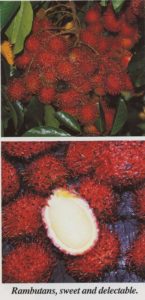
|
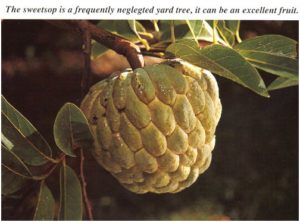
|
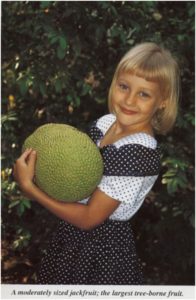
|
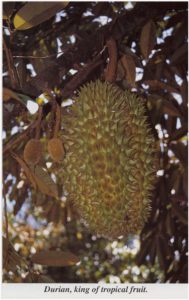
|
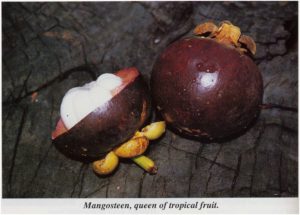
|



